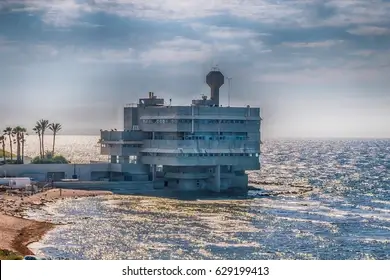Maria de Los Angeles Alvario Gonzalez was a pioneering Spanish biologist who was one of the first women to earn a doctorate in marine biology. Her research focused on Zooplankton, a type of plankton that lives on the seafloor. She also became a naturalist, studying how water affects different organisms.
Contents
Maria de Los Angeles Alvarino Gonzalez was a pioneering Spanish biologist.
Maria de Los Angeles Alvarino Gonzalez is a pioneering Spanish biologist who worked on oceanographic research. Her research focused on the plankton of the Bay of Biscay and the English Channel. She found evidence that the Atlantic Ocean was slowly drifting poleward. Later, she became the first woman to work aboard a British research vessel and made important discoveries about the distribution of plankton.
In her lifetime, Alvarino discovered 22 new species of Zooplankton and wrote more than 100 scientific papers. She also became an emeritus professor at various US, Brazilian, and Mexican universities. She died in San Diego, California, on May 29, 2005.
After graduating from college, Maria de Los Angeles Alvarino Gonzalez worked on oceanography and other scientific projects. Her work at the University of Madrid earned her a Ph.D. She also earned a British Council fellowship and traveled to Europe with scientists from many countries.
Her contributions to marine science are legendary. Her discovery of 22 new species of Zooplankton made her a highly-respected biologist. She was also the first woman to work on an exploration ship. As an early child, she developed an interest in natural history and studied marine science. She also worked at a marine biological laboratory in Plymouth, England.
Alverno studied natural sciences at the Complutense University of Madrid. She later married Eugenio Leira Manso, a former naval captain, and Knight of the Royal Military Order of San Hermenegildo. Later, she became an architect.
She was the first woman to earn a doctorate in marine biology.
Maria de Los Angeles Alvaro Gonzalez was one of the world’s most famous marine scientists. She published over 100 scientific papers and discovered 22 new species of Zooplankton. Her research changed the way marine research was conducted. She also became the first woman to hold the position of the chief scientist on a scientific exploration ship. Today, she is still considered one of the most important figures in marine biology.
Alvaro was born in Serntes, Spain, and studied natural sciences at the University of Madrid. In 1956, she received a Fulbright fellowship. She worked with Dr. Mary Sears, president of the United States Oceanographic Congress, and Dr. Roger Revelle, president of Scripps Institution of Oceanography (SIO), which is part of the University of California San Diego. She was awarded the Great Silver Medal of Galicia by King Juan Carlos I and Queen Sophia of Spain for her extraordinary scientific achievements. In 1993, she was awarded the Silver Medal of Galicia for outstanding work. In the following years, she became a celebrated architect and gave birth to her daughter, Maria de Los Angeles Alvaro Gonzalez.
Alvaro Gonzalez was a pioneer in marine research and the first woman to study plankton under a microscope. She published over 100 scientific papers and worked as a chief scientist on an exploration ship. Her work led to the discovery of new species of Zooplankton and other marine creatures. Alvaro Gonzalez was awarded her doctorate in marine biology in 1962 and died at the age of 105.
She studied Zooplankton
In 1952, Maria de Los Angeles Alvaro Gonzalez won a position at the International Institute of Oceanography (IEO). She moved to Galicia and studied plankton as a lab assistant. She then took a British Council Fellowship and went to Plymouth to investigate Zooplankton.
During her life, Maria de Los Angeles Alvaro Gonzalez published more than 100 scientific papers and discovered 22 new species of Zooplankton. Her work was instrumental in improving our understanding of these tiny creatures that live in our oceans. She also became the first woman to hold the position of the chief scientist on an exploration ship.
During the 1950s, Alvarino studied Zooplankton in the English Channel and Bay of Biscay. Her research revealed many unusual forms of life. She returned to Spain in 1954 and continued her work on plankton. She used special nets and recruited fishermen and naval research vessels to help her collect samples. She also studied the Mediterranean Sea and the area near Newfoundland.
In addition to her work, Mara de Los Angeles Alvaro Gonzalez also taught other scientists. She was one of the first women to receive a Ph.D. in marine biology at the University of Madrid. She published several books and taught at many universities. She also had a YouTube channel dedicated to her work.
She was a naturalist.
Mara De Los Angeles Alvaro Gonzalez (1888-1973) was a Spanish-American oceanographer and marine biologist. Born in Serantes, Spain, she developed an interest in natural history at a young age. She earned her Master’s degree in natural sciences from the Complutense University in Madrid. She began teaching various subjects in Spain during the 1940s.
Alvaro went on to conduct research on Zooplankton in the English Channel and Bay of Biscay. There, she discovered various Zooplankton, including some unusual life forms. In 1954, Alvarino returned to Spain to continue her research. She used special nets to catch plankton and recruited fishermen and naval research ships to collect samples. She also studied marine life in the Mediterranean Sea and near Newfoundland.
Alvaro specialized in marine plankton, and she discovered over 22 new species of this marine animal. She also published over 100 scientific papers. As a result of her work, she became a leading authority on the distribution of plankton in the world’s oceans.
After the Civil War, Alvarino returned to study, earning her Master’s degree in natural sciences. She worked as a biology teacher in Ferrol and later returned to Madrid, where she worked as a fishery research biologist for the Department of Sea Fisheries. Spanish law prohibited women from entering Spanish navy vessels, but she was able to study marine life on a British ship.
She was an oceanographer.
Mara de los Angeles Alvario Gonzalez was a Spanish-American marine biologist. She earned her Ph.D. in marine biology at the University of Madrid and was also the first woman to teach at Mexico’s National Autonomous University. She later went on to become a professor at San Diego State University.
Maria de Los Angeles Alvaro Gonzalez studied marine biology instead of medicine and was regarded as a global authority on plankton. She was also the first woman to work on an exploration vessel. Her research helped scientists understand the living habits of plankton, as well as how they survive in the ocean.
In her lifetime, Maria de Los Angeles Alvarino Gonzalez published over 100 scientific papers and discovered 22 new species of Zooplankton. Her contributions to marine science were vast, and her discoveries led to the development of new theories about the existence of small marine organisms. Her work was widely recognized, and she became one of the first women to be the chief scientist on a scientific exploration ship.
Alvaro was born in Serantes, Spain, and studied natural sciences at the University of Madrid. Her father was a doctor and did not support his daughter’s medical career, so she chose to study natural sciences. She then won a British Council Fellowship, which allowed her to work aboard a British research vessel.
She was a fishery research biologist.
Maria de Los Angeles Alvaro Gonzalez, a Spanish oceanographer and fishery research biologist, is a well-known figure in the history of marine science. She was recognized as an expert in the field of plankton biology. She was also one of the first women to hold a Ph.D. in marine biology from the University of Madrid. She was a prolific author, publishing more than 100 scientific books.
Alvarion’s interests included aquatic animal behavior, predatory behavior, and the distribution of plankton. She also studied the impact of ships and pollution on marine life. Alvarion’s work also helped coordinate oceanic research between Latin American countries.
Maria de Los Angeles Alvaro Gonzalez studied marine biology for years and published numerous books, including work on Caribbean fishes. She eventually became an American citizen and worked at the Scripps Oceanographic Institution in San Diego. She retired in 1987 and became an emeritus scientist in 1993. She died at the age of 88.
In her lifetime, Maria de Los Angeles Alvaro Gonzalez published more than 100 scientific papers and discovered 22 new species of Zooplankton. Her work led to a better understanding of these tiny organisms. She was also the first woman to serve as the chief scientist of an exploration ship.






